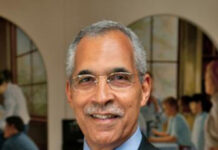 A new working paper of the National Bureau of Economic Research by scholars at the Institute for Economic Policy Research at Stanford University reports on a new way to measure racial segregation in American society. The authors hope that this new way of measuring segregation can provide clues to different ways for combatting its negative effects.
A new working paper of the National Bureau of Economic Research by scholars at the Institute for Economic Policy Research at Stanford University reports on a new way to measure racial segregation in American society. The authors hope that this new way of measuring segregation can provide clues to different ways for combatting its negative effects.
Instead of focusing on where people live – a common basis for gauging segregation – the researchers used a less static approach for their study. They compiled GPS data from smartphones to analyze movement patterns and compute what they call “experienced segregation” – the amount of people’s exposure to other races as they go about their daily lives.
“Until now, we’ve calculated how segregated neighborhoods are, or how segregated schools or workplaces are, but those are coarse approximations to what we might also care about, which is how segregated people’s experiences are in all of the different places they are at – home, work, school, shopping, the movies, walking down the street, going to a park and so on,” said Matthew Gentzkow, who is a professor of economics in the School of Humanities and Sciences at Stanford University and a co-author of the study.
Racial integration, the researchers found, is highest at entertainment, retail, and eating establishments, while time spent at locations like churches and schools is somewhat more racially isolated. The paper notes that people spend a lot of time outside their neighborhoods. And when they do, they’re more likely to encounter greater diversity than they find at home.
It turns out that across most metropolitan areas of the United States, people’s actual experiences, as captured by the new measure, are substantially less segregated than what residential segregation measures might indicate. The study did find that residential segregation and experienced segregation across cities are highly correlated. Both measures tend to be higher in the South and the Great Lakes region, and tend to be lower in the upper Midwest and Northwest.
“The study’s results point to the fact that anything that we tie to home neighborhoods is going to tend to reinforce segregation,” Dr. Gentzkow said. “One thing we can try to do is think about how to change where people live. It takes a long time for that kind of change to happen.”.











Stanford University definitely need to start this research project in their own backyard via the Palo Alto and entire Silicon Valley metropolitan area. Talk about hypocrisy.